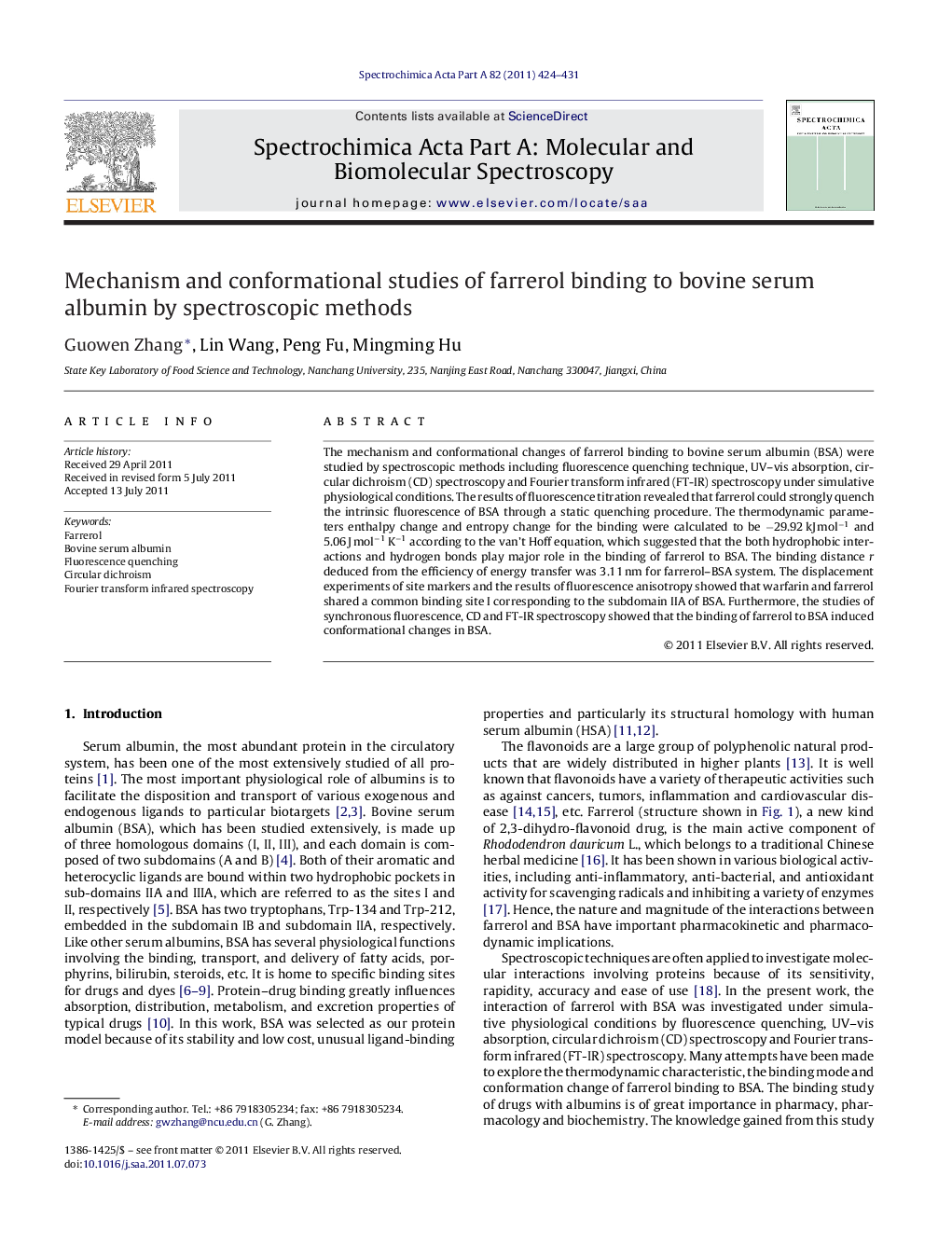| Article ID | Journal | Published Year | Pages | File Type |
|---|---|---|---|---|
| 1233323 | Spectrochimica Acta Part A: Molecular and Biomolecular Spectroscopy | 2011 | 8 Pages |
The mechanism and conformational changes of farrerol binding to bovine serum albumin (BSA) were studied by spectroscopic methods including fluorescence quenching technique, UV–vis absorption, circular dichroism (CD) spectroscopy and Fourier transform infrared (FT-IR) spectroscopy under simulative physiological conditions. The results of fluorescence titration revealed that farrerol could strongly quench the intrinsic fluorescence of BSA through a static quenching procedure. The thermodynamic parameters enthalpy change and entropy change for the binding were calculated to be −29.92 kJ mol−1 and 5.06 J mol−1 K−1 according to the van’t Hoff equation, which suggested that the both hydrophobic interactions and hydrogen bonds play major role in the binding of farrerol to BSA. The binding distance r deduced from the efficiency of energy transfer was 3.11 nm for farrerol–BSA system. The displacement experiments of site markers and the results of fluorescence anisotropy showed that warfarin and farrerol shared a common binding site I corresponding to the subdomain IIA of BSA. Furthermore, the studies of synchronous fluorescence, CD and FT-IR spectroscopy showed that the binding of farrerol to BSA induced conformational changes in BSA.
Graphical abstract. The mechanism and conformational change of farrerol binding to bovine serum, albumin (BSA) were studied by spectroscopic methods. The quenching mechanism, binding constants, thermodynamic parameters, and binding distance were obtained.Figure optionsDownload full-size imageDownload as PowerPoint slideHighlights►We investigate the mechanism and conformational changes of farrerol binding to BSA. ► The binding constants, binding sites and thermodynamic parameters were calculated. ► Farrerol is located in subdomain IIA (site I) of BSA. ► The binding of farrerol to BSA induced changes in the secondary structure of BSA.
